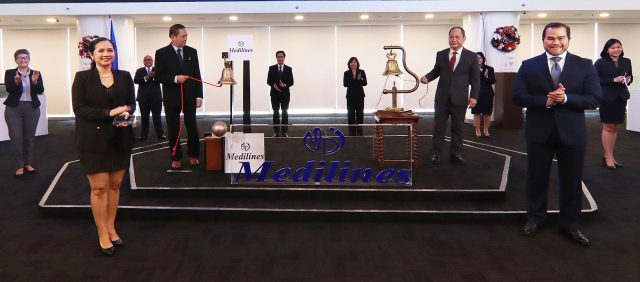Approved foreign investments declined anew in Q3
FOREIGN INVESTMENT pledges declined anew in the third quarter after recovering in the preceding three-month period, data from the Philippine Statistics Authority (PSA) published on Tuesday showed.
Approved foreign investments declined by 45.8% year on year to P16.82 billion in the July-September period from the P31.03 billion recorded a year ago.
The period’s drop was a reversal of the 45.5% growth posted in the second quarter. This annual decline, however, was smaller compared with the 83% plunge seen in the third quarter of 2020.
With the exception of the preceding quarter, the third quarter marked the sixth time approved foreign investment pledges declined since the start of the coronavirus pandemic.
The P16.82 billion in approved investments in the period was the smallest in five quarters, or since the second quarter of 2020 when pledges totaled P15.46 billion.
Meanwhile, investment pledges from Filipino nationals fell by 42.5% year on year to P83.66 billion in the third quarter. It accounted for 83.3% of the combined local and foreign pledges worth P100.48 billion, which was also down by 43.1%.
Approved projects with foreign interest in the third quarter are estimated to generate 10,268 jobs, 51.7% less than a year ago.
When accounting for commitments from Filipinos, these pledges are expected to generate 88,324 jobs should they materialize. This was 175.2% more than the 32,100 additional employment projected a year ago.
PSA’s foreign investment commitments differ from the actual foreign direct investments (FDIs) tracked by the Bangko Sentral ng Pilipinas for balance of payments purposes. The central bank’s monitoring also goes beyond the projects and includes other items such as reinvested earnings and lending to Philippine units via their debt instruments.
Only four of the seven investment promotion agencies were able to secure investment commitments from foreigners in the period. Of these, the Philippine Economic Zone Authority contributed the most with P14.68 billion, followed by the Board of Investments with P1.007 billion, Clark Development Corp. with P847.33 million, and the Subic Bay Metropolitan Authority with P290.03 million.
By industry, P11.01 billion or 65.5% of the total foreign investment pledges in the period went to the manufacturing sector, followed by real estate activities with 16% (P2.70 billion), and administrative and support service activities with 14.2% (P2.38 billion).
More than half of the foreign investments pledged in the third quarter came from Japan (P11.16 billion), followed by the Netherlands (P1.56 billion), and the British Virgin Islands (P698.3 million).
Only six of the 17 regions cornered these foreign pledges, the largest of which is expected to fund projects in Calabarzon (P8.45 billion). Other regions that recorded foreign pledges were Ilocos Region (P3.40 billion), Central Luzon (P2.12 billion), the National Capital Region (P2.10 billion), Central Visayas (P609.9 million), and Soccsksargen (P136.7 million).
“[T]he outlook for foreign investments has not completely recovered because of the uncertainties brought about by the pandemic. [The third quarter] was when we had another lockdown to control the infection surge and may have affected outlook [for the period],” UnionBank of the Philippines Chief Economist Ruben Carlo O. Asuncion said via mobile phone message.
“I think that [the fourth quarter] will be a lot better as the country continues to experience a decline in COVID infections,” Mr. Asuncion added.
For University of Asia and the Pacific economist Victor A. Abola: “We should not expect much improvement for the [fourth quarter] as foreign investors will have a wait-and-see attitude due to the uncertainties regarding economic policy in view of the coming presidential elections [in May],” he said in an e-mail.
AMENDMENTS RATIFIED
Meanwhile, House lawmakers approved on Tuesday the bicameral conference committee report on a bill amending the country’s foreign investments law.
The House of Representatives ratified the Bicameral Conference Committee report on the disagreeing provisions of House Bill 300 and Senate Bill 1156, which seek to amend Republic Act 7042 or the Foreign Investments Act of 1991.
The measure is a priority of President Rodrigo R. Duterte and has been backed by several business and foreign chamber groups.
The Senate has yet to ratify the measure. Once the measure is approved by both chambers of Congress, it will be sent to Malacañang for Mr. Duterte’s signature.
Trade Secretary Ramon M. Lopez said in a Viber message that he expects the measure to be signed by the President by January or February.
The members of the House committee agreed to use the Senate’s version as the working draft for the reconciled measure.
Under the reconciled version, foreigners are allowed to invest 100% equity in domestic market enterprises, except in areas included in the foreign investment negative list.
The required number of local direct hires for foreign companies will be reduced to 15 from the current 50.
An Inter-Agency Investment Promotion Coordination Committee will be created under the proposed law, which will be led by the Department of Trade and Industry.
The measure will not cover financial institutions regulated by the Bangko Sentral ng Pilipinas and jobs under the jurisdiction of professional regulatory boards.
Mr. Lopez said the ratification of the bill will help technology companies and start-ups to invest in the Philippines.
Michael L. Ricafort, chief economist at Rizal Commercial Banking Corp., said the ratification of the measure will aid the country’s economic recovery through increased business opportunities and the creation of jobs.
“Going forward, foreign investment could go up amid measures to further reopen the economy towards greater normalcy, with the national adoption of the Alert Level System,” he said in a Viber message. — MIUC and R.L.C. Ku














